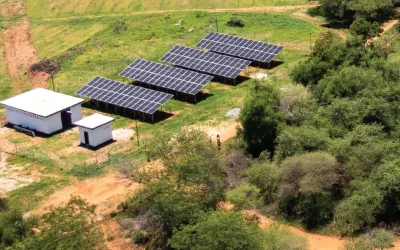Government targets 85 000ha winter wheat cropping
AT least 85 000 hectares of land will be put under winter wheat this year up from over 42 000 hectares achieved last year, as the country seeks to boost output and meet local industry requirements.
Annual wheat consumption for Zimbabwe is estimated at above 400 000 tons and wheat imports of around 80 percent are made each year.
Following the good 2020/21 rain season most dams are full and hopes are high the country would meet this year’s target. According to the Zimbabwe National Water Authority, the national dam level average stood at 92,6 percent as of Tuesday last week.
Government and the private sector have both expressed commitment to working together in boosting output.
In an update yesterday, the Ministry of Lands, Agriculture, Fisheries, Water and Rural Resettlement said preparations for this year’s winter cropping season were under way and will be rolled out in three programmes.
“The Government is targeting 85 000 hectares of winter wheat this year under three programmes as follows; 60 000ha under Command Agriculture, 15 000ha under private investors and 10 000ha under Presidential Inputs Scheme,” the ministry posted on its official Twitter account.
Preparations for cropping have already received a boost after the Reserve Bank of Zimbabwe (RBZ) recently announced an additional $2,5 billion to capacitate farmers in the forthcoming 2021 winter wheat planting season.
The increase in support for winter farmers is part of measures by the Government to boost output and curb imports.
According to the Grain Millers Association of Zimbabwe, the country requires 400 000 tons of wheat annually, consisting of at least 270 000 tons of local production and approximately 130 000 tons of specific grade imported wheat to produce suitable bakers’ flour.
To improve the country’s irrigation capacity, Government, through Zinwa, has embarked on several dam construction projects across the country including the Gwayi-Shangani Dam in Matabeleland North province, Sengwa and the Marovanyati Dams in Mashonaland Central.
The dam projects are part of a deliberate strategy to move away from rain-fed agriculture to irrigation in pursuit of an agro-centric economic growth plan.
Construction of new water bodies is expected to assist food-insecure communities through providing water for irrigation and fish from Command Fisheries while electricity would also be generated from some of the projects.
The agricultural sector remains key to improving the livelihoods of ordinary Zimbabweans and irrigation development could be the answer as climate change has affected rainfall patterns.
With over 70 percent of Zimbabweans living off agriculture, there have been calls for the Government to invest more in irrigation to increase agricultural production.
The country has over the past few years seen its agricultural production fluctuate due to changing weather patterns as well as other production bottlenecks.
For example, in the 2014/15 farming season, Zimbabwe wrote off about 300 000 hectares out of an estimated two million hectares that had been planted. — Business Reporter/New Ziana








